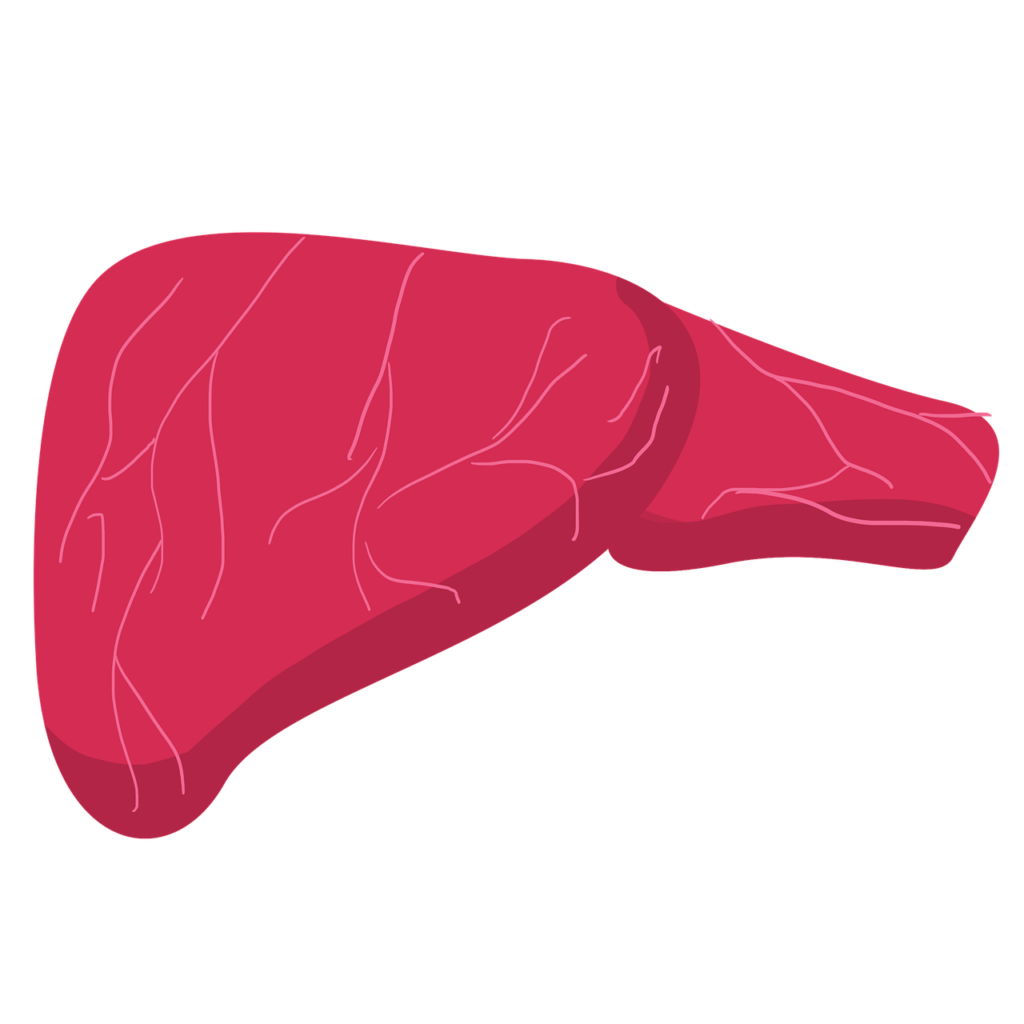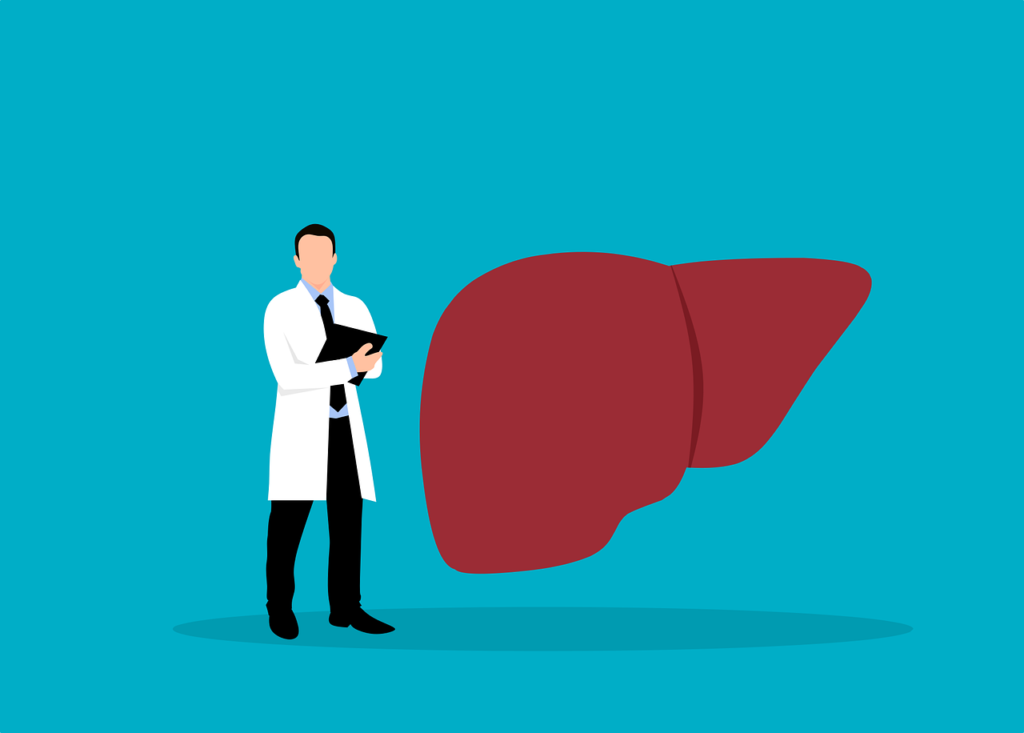Liver function is hampered by the progressive and irreversible disorder known as cirrhosis of the liver, in which scar tissue replaces healthy liver tissue. It can arise from several conditions, including fatty liver disease, viral hepatitis, and chronic drinking. Comprehending cirrhosis is essential for investigating available therapy alternatives, such as the possible advantages of homeopathy.

Meaning of Cirrhosis of Liver
Cirrhosis is a chronic, progressive liver disease in which healthy liver tissue is replaced with scar tissue, impairing liver function. This scarring, also known as fibrosis, can be caused by several conditions, such as chronic alcohol abuse, viral hepatitis, and non-alcoholic fatty liver disease.
The Pathology of Cirrhosis of Liver
The liver’s normal, healthy tissue is replaced by fibrous tissue because of cirrhosis. The liver’s essential functions are disrupted as this scar tissue builds up, including:
1. Blood’s Flow: Cirrhosis causes blood flow obstruction in the portal vein, which leads to portal hypertension.
2. Detoxification: The liver is an essential component of the body’s detoxification process because it breaks down drugs and toxins. Cirrhosis impairs this function.
3. Protein Production: Blood-clotting factors and albumin are two examples of essential proteins that are produced in the liver. These proteins may become deficient because of cirrhosis.
4. Bile Production: The liver produces bile, which aids in digestion. Cirrhosis can disrupt bile production, leading to digestive problems.
Types of Cirrhosis of Liver
Liver cirrhosis encompasses various types, each with its distinct aetiology:
1. Alcohol-Induced Cirrhosis
– Caused by persistent and excessive alcohol consumption.
2. Viral Cirrhosis
– Linked to chronic viral infections, specifically hepatitis B and C.
3. Non-Alcoholic Fatty Liver Disease (NAFLD)
– Associated with metabolic disorders and obesity, potentially progressing to cirrhosis.
4. Autoimmune Cirrhosis
– Occurs when the immune system erroneously attacks liver cells.
5. Biliary Cirrhosis
– Connected to conditions affecting the bile ducts.
What Causes Cirrhosis of the Liver?
Cirrhosis can stem from various causes, with key contributors being:
1. Alcohol Abuse
– Primary causative factor, resulting from prolonged and excessive alcohol consumption.
2. Chronic Viral Infections
– Hepatitis B and C infections significantly contribute to cirrhosis.
3. Non-Alcoholic Fatty Liver Disease (NAFLD)
– Triggered by obesity, diabetes, and high cholesterol, potentially advancing to cirrhosis.
4. Autoimmune Conditions
– Cirrhosis may develop due to autoimmune diseases, such as autoimmune hepatitis.
5. Bile Disorders
– Conditions affecting the bile ducts, like primary biliary cirrhosis, can lead to cirrhosis.
Risk Factors of Cirrhosis of the Liver
Certain risk factors increase the likelihood of cirrhosis, including:
1. Excessive Alcohol Consumption
– Persistent alcohol abuse poses a significant risk for alcoholic cirrhosis.
2. Chronic Diseases
– Persistent hepatitis B or C infections can result in viral cirrhosis.
3. Obesity
– Conditions related to obesity elevate the risk of NAFLD and subsequent cirrhosis.
4. Genetics
– Individuals with a genetic predisposition to liver diseases may be more prone to cirrhosis.
The Stages and Signs of Cirrhosis of Liver
Cirrhosis progresses through various stages, each characterized by distinct symptoms. Early recognition of these stages and symptoms is crucial for prompt diagnosis and intervention.
1. Cirrhosis that compensates: The liver can still perform some functions at this early stage, and symptoms may be minimal.
2. Cirrhosis with no cure: The liver’s functions decline as the disease progresses, resulting in more severe symptoms and complications.
3. Advanced liver disease: Ascites, or fluid accumulation in the abdomen, and hepatic encephalopathy, or brain dysfunction caused by liver failure, become common complications at this stage.
4. End-Stage Cholangitis: This is the most severe stage, which frequently necessitates liver transplantation and liver failure.
The Signs and Symptoms of Liver Cirrhosis
The signs and symptoms of cirrhosis can vary depending on the stage and the underlying cause but may include:
1. Fatigue: Feeling excessively tired and weak.
2. Jaundice: Yellowing of the skin and eyes due to a buildup of bilirubin.
3. Abdominal Pain: Pain or discomfort in the upper right abdomen.
4. Swelling: Swelling in the abdomen (ascites) and legs (edema).
5. Easy Bruising: Due to decreased production of blood-clotting factors.
6. Confusion: Cognitive changes, memory problems, and confusion, especially in advanced stages.
7. Weight Loss: Unintentional weight loss.
8. Nausea and Vomiting: Digestive symptoms, including nausea and vomiting.
How to Prevent Cirrhosis of Liver?
Preventing cirrhosis involves adopting a healthy lifestyle and addressing specific risk factors:
1. Limit Alcohol Consumption: For those at risk, reducing or eliminating alcohol consumption is essential.
2. Vaccination: Getting vaccinated against hepatitis B can prevent viral cirrhosis.
3. Eating Well: A healthy weight and a well-balanced diet can help prevent cirrhosis caused by NAFLD.
4. Regular Examinations: The early stages of liver disease can be detected during routine medical examinations.
5. Safe Practices: Practicing safe sex and avoiding sharing needles can reduce the risk of viral hepatitis.
Investigating Cirrhosis of Liver
Early diagnosis is key to managing cirrhosis effectively. Doctors use various methods to investigate and diagnose cirrhosis:
1. Blood Tests: Liver function tests, viral hepatitis tests, and blood clotting tests can provide important information.
2. Imaging: Imaging techniques like ultrasound, CT scans, and MRIs can reveal liver abnormalities.
3. Liver Biopsy: In some cases, a small sample of liver tissue may be taken for examination.
4. Fibro Scan: This non-invasive test measures liver stiffness, providing information about fibrosis.
5. Endoscopy: In cases of suspected varices (enlarged veins in the esophagus), endoscopy may be used for diagnosis.
Homeopathy and Cirrhosis of Liver
Homeopathy is a holistic approach to healing that involves using highly diluted substances to stimulate the body’s natural healing abilities.
Here are some Homeopathic remedies helps to manage Cirrhosis of liver:
1. Carduus Marianus (Milk Thistle)
– Indications: Ill effects of alcoholic beverages, especially beer; pain in the region of the liver; left lobe sensitivity; fullness and soreness; swelling of the gallbladder with painful tenderness; hyperemia of the liver with jaundice; cirrhosis with dropsy.
– Dosage: 10 drops in half a glass of water, three times a day.
2. Nux Vomica
– Indications: Liver engorged with stitches and soreness; colic with upward pressure, causing shortness of breath and desire for a stool; often associated with a sedentary lifestyle and a preference for stimulants like coffee and wine, possibly in excess.
– Dosage: 3C to 30C or 200C, 3-5 pills three times a day depending on the condition.
3. Phosphorus
– Indications: Liver congestion; acute hepatitis; fatty degeneration; jaundice; sharp, cutting pains; a very weak, empty sensation felt in the whole abdominal cavity.
– Dosage: 3C to 30C, 3-5 pills three times a day depending on the condition.
4. Lycopodium
– Indications: Liver sensitivity; brown spots on the abdomen; dropsy due to hepatic disease; hepatitis, atrophic form of nutmeg liver; pain shooting across the lower abdomen from right to left; bloating after a light meal, especially in the evening.
– Dosage: 6C to 30C or 200C, 3-5 pills three times a day depending on the condition.
5. Arsenicum Album
– Indications: Enlarged and painful liver and spleen; ascites and anasarca; swollen and painful abdomen; gnawing, burning pains resembling coals of fire, relieved by heat.
– Dosage: 3C to 30C or 200C, 3-5 pills three times a day depending on the condition.

Wrapping Up!
Liver cirrhosis poses a significant medical challenge, requiring comprehensive care. While homeopathy can contribute to improving the quality of life and managing symptoms, it is crucial to emphasize its use in conjunction with conventional medical care. Early diagnosis, preventive measures, and lifestyle modifications remain pivotal aspects of cirrhosis treatment.
Seeking personalized guidance and treatment options tailored to specific requirements from healthcare professionals is always advisable. In the holistic approach to liver health, the collaboration of homeopathy with standard medical care ensures a more comprehensive and effective strategy for managing this complex condition.
We hope that this introduction to cirrhosis has educated you on the disease’s stages, causes, and possible complementary treatments like homeopathy that you can take into consideration on your path to better liver health. Remember that your healthcare provider is your best resource for guidance and support in managing cirrhosis effectively.
Reach out to us for a Consultation
For any queries, reach out to us at contact@homeopathic.ai
This blog is for information purposes. It’s crucial to note that while homeopathy is a centuries-old practice with many adherents worldwide, always consult a qualified homeopath or medical professional before initiating any treatment.





